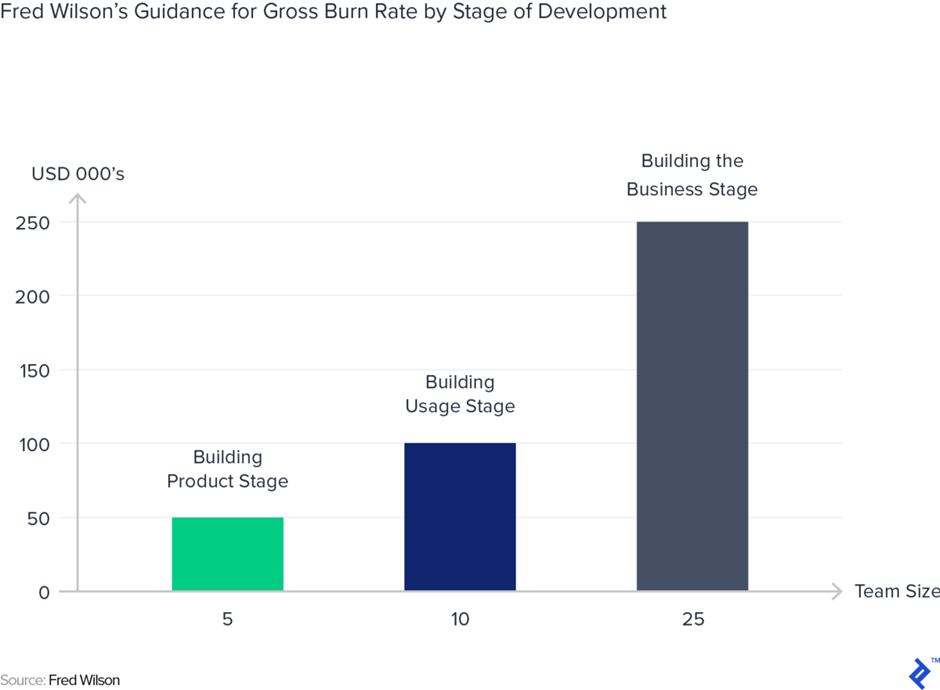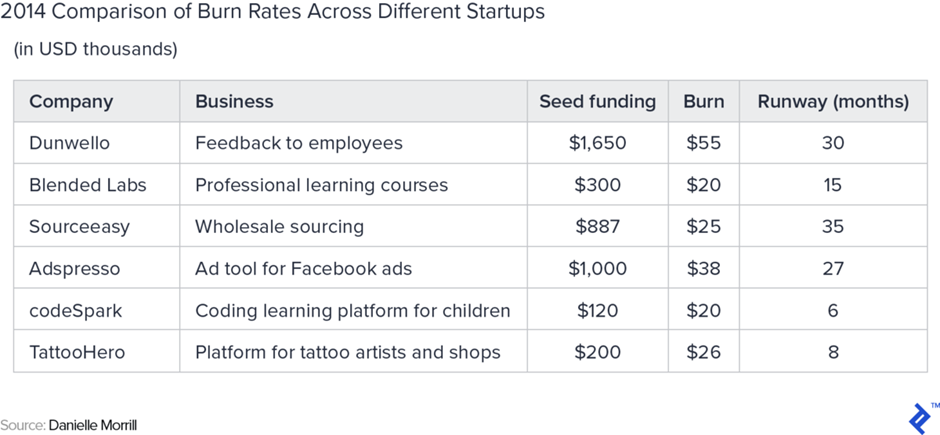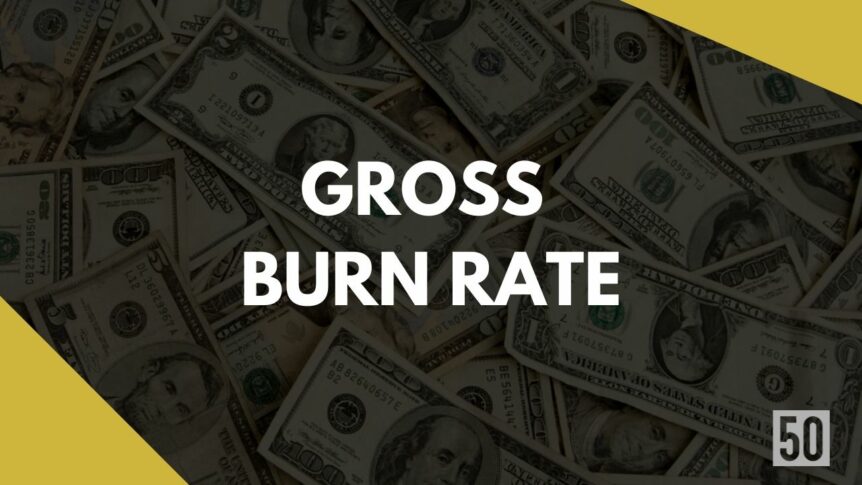Are you curious about the concept of gross burn rate and why it’s essential to keep track of in your business? From entrepreneurs just starting out, to established founders looking for their next growth phase, understanding how much money is being burned (or spent) each month can be an important metric in driving a successful venture. In this article, we will break down everything you need to know about gross burn rate–from what it is and how to calculate it, all the way through to utilizing best practices when managing yours. Read on if you’re ready to maximize your resources efficiently and effectively!
What is Gross Burn Rate?
Gross burn rate is an important metric for companies looking to evaluate their operations’ efficiency. It evaluates the money that a company keeps from every dollar spent, giving insight into cost drivers and existing operating expenses such as rent, salaries, and overhead costs.
By measuring gross burn rate on a monthly basis, businesses can track their success in allocating resources to better measure overall profitability. Understanding gross burn rate is key for businesses to stay competitive and build sustainability in any economic climate.
Why Is It Important For Startups To Track Their Gross Burn Rate?
It is crucial for startups to closely monitor their gross burn rate in order to understand their financial health and anticipate future financial needs. By keeping track of cash outflow, they are able to determine how much money they’re spending each month – whether it’s new hires, research and development, marketing, or other expenses – and have a better sense of when they need to raise additional funds.
Knowing when to raise additional capital is key because it ensures the startup can pay its bills while also allowing them enough time to find potential investors. Furthermore, being aware of cash flow allows businesses to plan ahead by budgeting necessary resources into projects that would help their business scale in the long long term.
Ultimately, tracking the gross burn rate helps startup owners make more informed decisions from a financial perspective and lay a solid foundation for the growth of their business.
How Do You Calculate Gross Burn Rate?
Calculating a company’s Gross Burn Rate is a crucial financial metric that provides entrepreneurs and investors with an indication of the company’s cash flow. The formula used to calculate it is quite simple – Cash divided by Monthly Operating Expenses.
To illustrate, let us consider a start-up which has $1,000 in cash and operating expenses of $800 each month. In this case, the Gross Burn Rate will be calculated as 1,000 divided by 800, which equals 1.25 or 125%. This means that over the course of one month the company’s cash decreases by 25%. h
Calculating Gross Burn Rate is an essential way to keep track of how efficiently a business is using its capital and understand its financial health more accurately.
What Factors Affect Gross Burn Rate?
Gross burn rate is affected by a variety of factors, some include:
Company size and structure:
The larger the company, the greater the gross burn rate is likely to be. This is mainly due to increased overhead costs associated with larger companies such as wage expenses for additional staff, rent for a bigger space, etc.
Operating costs:
Any business operating expense has an impact on the overall burn rate. Depending on the type of business and the size of the company, these costs can range from rent and utility bills to employee wages, legal fees, taxes, etc.
Funding:
The amount of money a company has access to affects its burn rate. Companies with more funding typically have higher burn rates due to increased spending on research and development, marketing and advertising, etc.
Revenue:
Companies with more revenue are likely to have higher burn rates than those with less income because of increased overhead costs associated with scaling the business. As a company grows and its revenue increases, so does its gross burn rate.
Industry:
Different industries come with different operating expenses which can affect gross burn rate. For example, businesses in the tech industry typically have higher burn rates than those in other industries due to increased research and development costs associated with innovation.
Location:
Where a company is located can also play a large role in its gross burn rate. Companies located in cities with higher costs of living are likely to have higher burn rates due to increased overhead costs.
By understanding the factors that affect gross burn rate, businesses can better plan their finances and ensure long-term sustainability. With careful planning and efficient spending habits, companies can reduce their burn rate, enabling them to focus on growth and success.
What Is A Good Gross Burn Rate?
Maintaining a healthy burn rate is key to the health of any business. That’s why many entrepreneurs and experts will tell you that you should always strive to keep your runway at least twelve months long.
Put simply, this translates to having a gross burn rate of around one-twelfth of your available cash – so if you have $600,000 in cash reserves, aim for a burn rate close to $50,000 per month. This allows your organization to remain adaptable in the face of competitive and environmental changes while still ensuring that all operational costs are covered.
If you follow this approach and stay mindful of managing your finances wisely, there’s nothing stopping you from making your venture a success!
Benchmark On How To Set A Gross Burn Rate
Fred Wilson offers a general guide for determining gross burn rate: multiplying the total number of employees by $10,000. This amount takes into account all costs associated with each employee, such as rent and other expenses. According to Wilson, there are three stages of development in this process: Building Product stage, Building Usage Stage and Building the Business Stage.
At the Building Product stage, Fred Wilson suggests that teams consist of three or four engineers, a product manager and a designer. This should result in a gross burn rate of up to $50,000. As development progresses into the Building Usage Stage, additional personnel such as community managers and extra expenses will increase the gross burn rate up to $100,000. In the Building the Business Stage, the team should expand to include expanded management, growth and finance teams, resulting in a total gross burn rate of up to $250,000. Each employee’s expenses should be factored in at a fully burdened cash expense of $10,000.
By following these guidelines, companies can ensure they have considered all expenses associated with their team, and are accurately planning for the development of their product.

To give practical insights In 2014, a number of Seed and Series A startups shared their funding amounts and burn rates in an article. With burn rates up to $50,000 and runways ranging from 6-35 months (an average of 20 months), these companies were building products or usage at the early stages. Investor Mark Suster recommends a 15-18 month runway for early startups raising money.

Strategies to Decrease Gross Burn Rate
Maximize efficiency:
Focus on making sure that every dollar of your budget is delivering value and eliminating wasteful spending. Put systems in place to track expenses, identify areas where you can optimize operations, and hold yourself accountable for avoiding overspending.
Prioritize short-term gains:
Make sure your team understands the importance of achieving short-term goals and objectives that can help reduce your gross burn rate. Create incentives to make sure everyone is focused on these projects and use a mix of techniques such as cutting costs, streamlining processes, or increasing revenue.
Negotiate better deals:
Make sure your business is getting the most out of its contracts and agreements with suppliers, partners, and vendors. Negotiate for better terms that can help lower your costs or find ways to gain more value from each one.
Optimize pricing strategies:
Make sure you have a clear understanding of the market so you can adjust your prices accordingly. Take a look at what competitors are charging and find ways to adjust your own pricing strategies based on the available data.
Invest in more efficient technology:
Technology can help reduce costs, improve efficiency, and automate processes. Identify areas of your business where this could be beneficial and invest in solutions that will help you save money over time.
Hire the right talent:
Make sure you’re hiring the best people for the job and that they have the necessary skills and expertise. This will help ensure your team is as efficient as possible, reducing your gross burn rate in the process.
Monitor progress:
Regularly monitor and track your progress to make sure you’re on track. Put systems in place to track the metrics that will determine your gross burn rate and make adjustments when needed. This will help you stay ahead of any potential problems and course correct as necessary.
By following these strategies, you can effectively reduce your gross burn rate and ensure that your business is running efficiently and cost-effectively. Doing so will help you maintain a healthy financial position and secure your long-term success.
Conclusion
If you’re looking to improve your business or startup’s gross burn rate, following these tips should help you get started. Keep in mind that every company is different and what works for one might not work for another. The most important thing is to track your progress so you can see what’s working and what needs to be changed. What other methods have you used to lower your gross burn rate? Let us know in the comments below!

